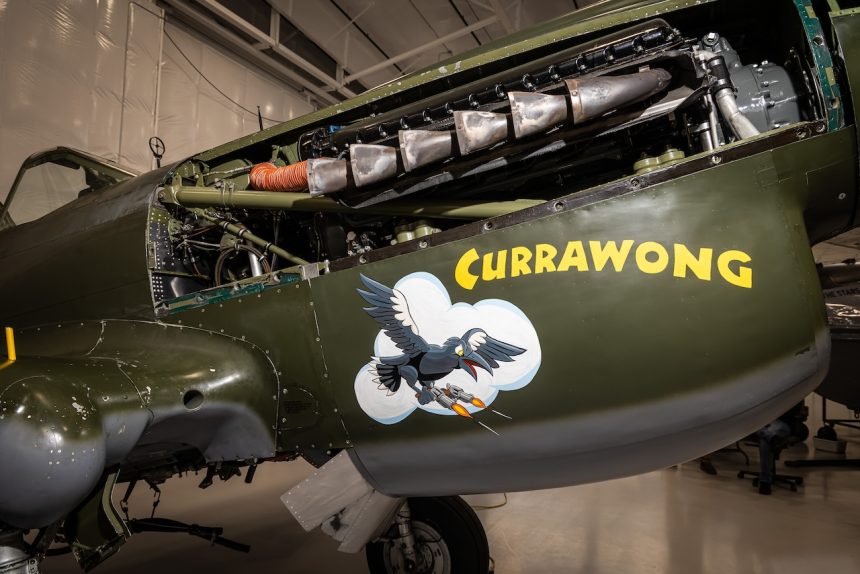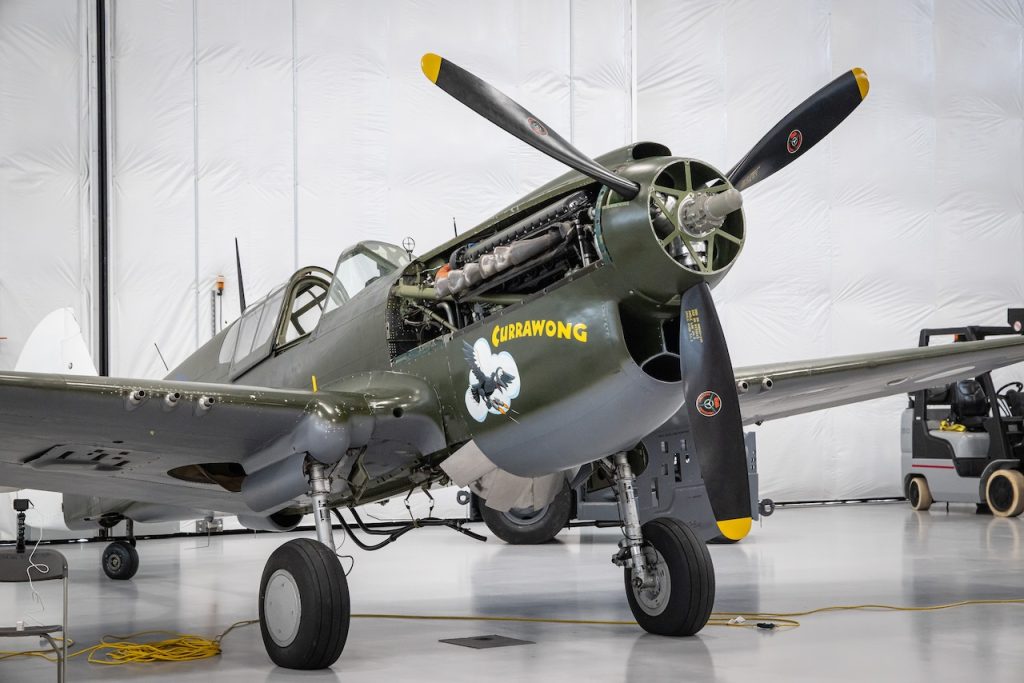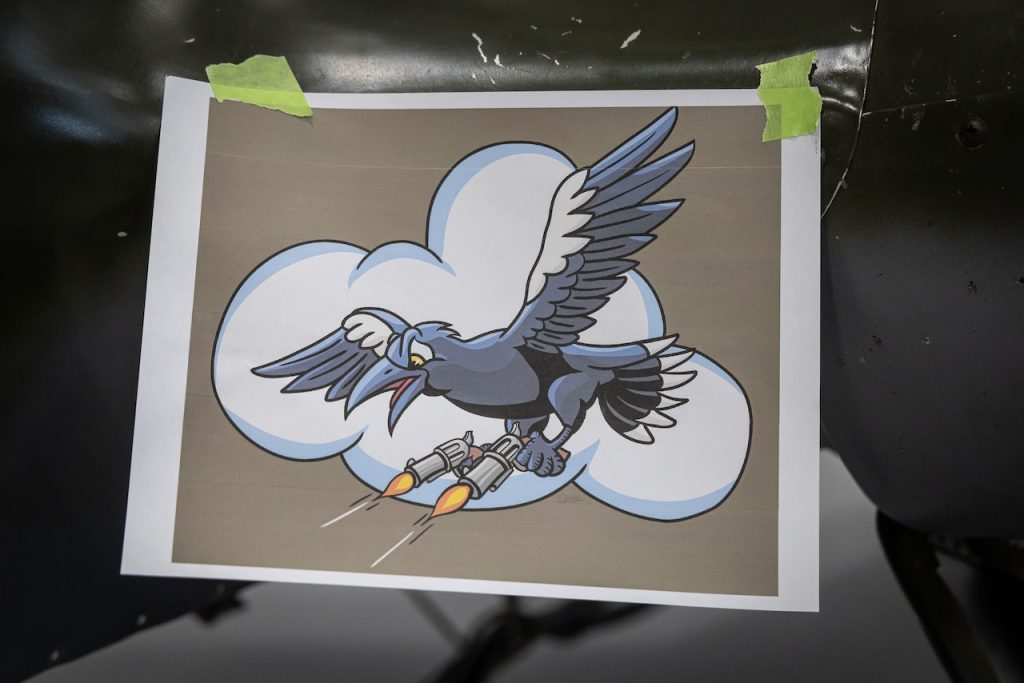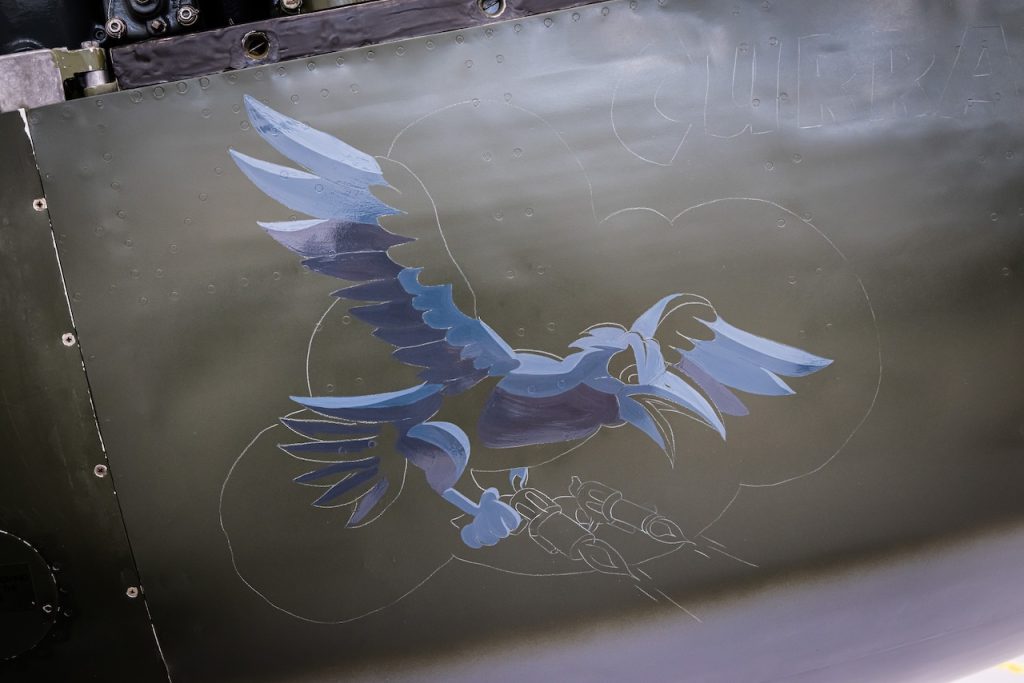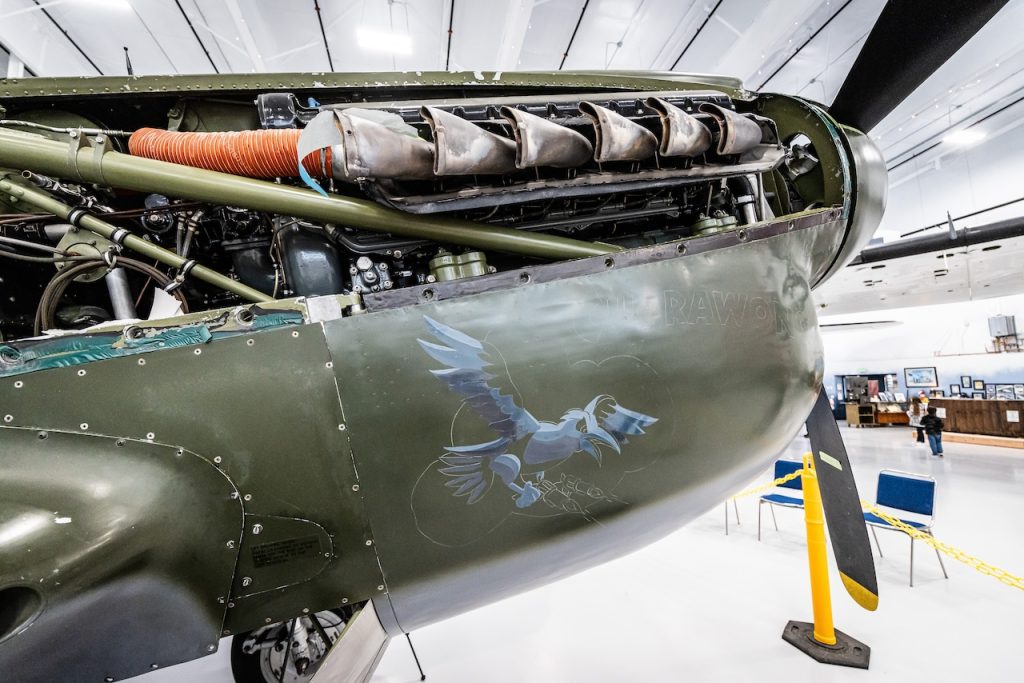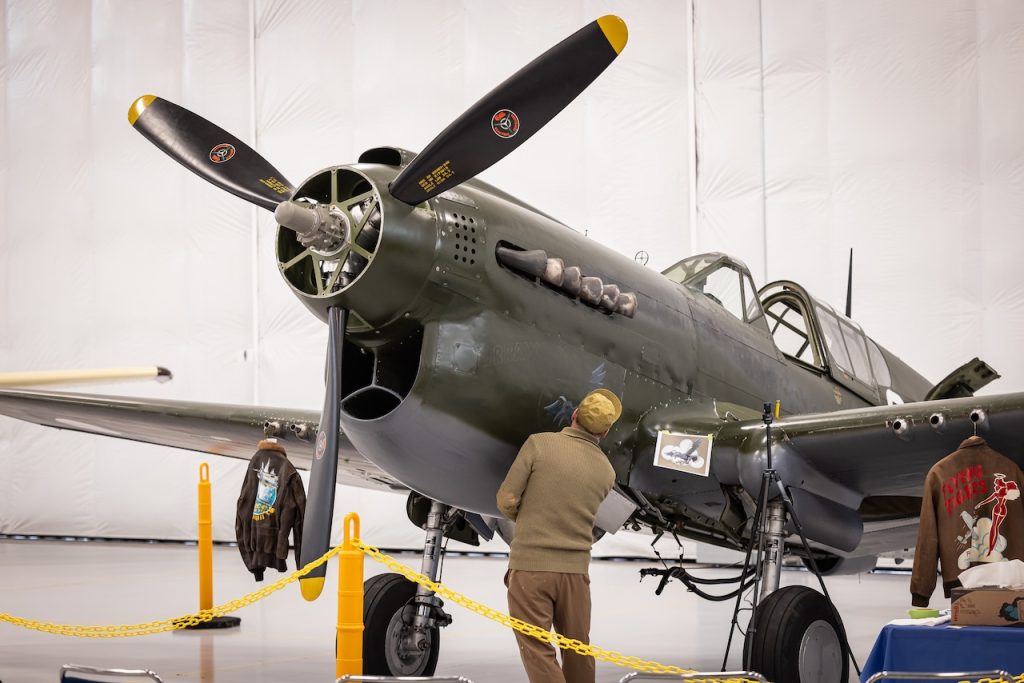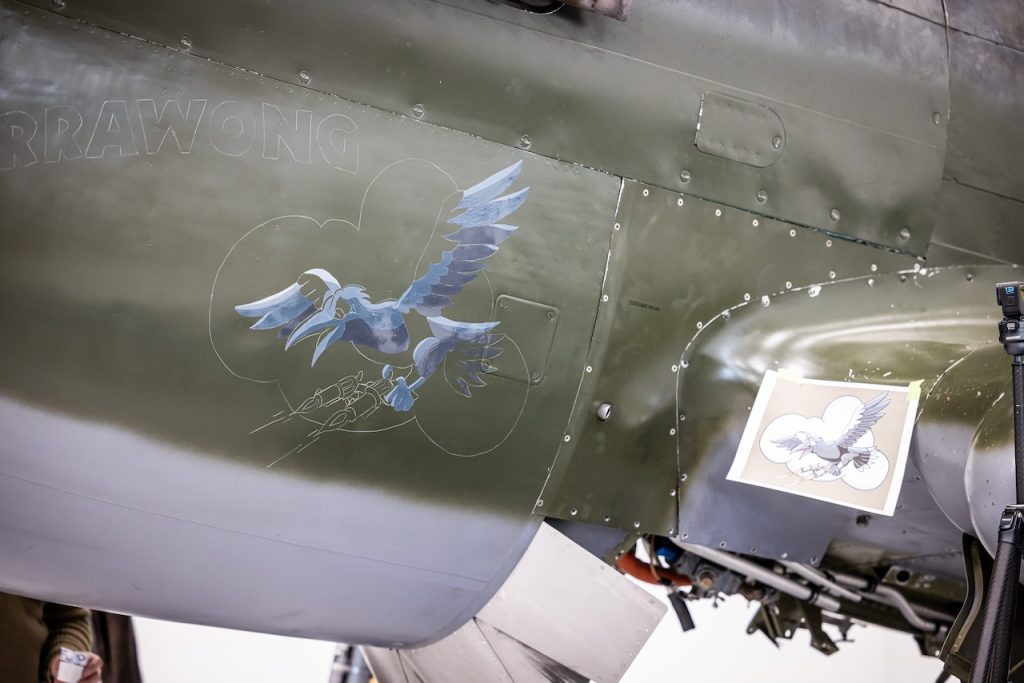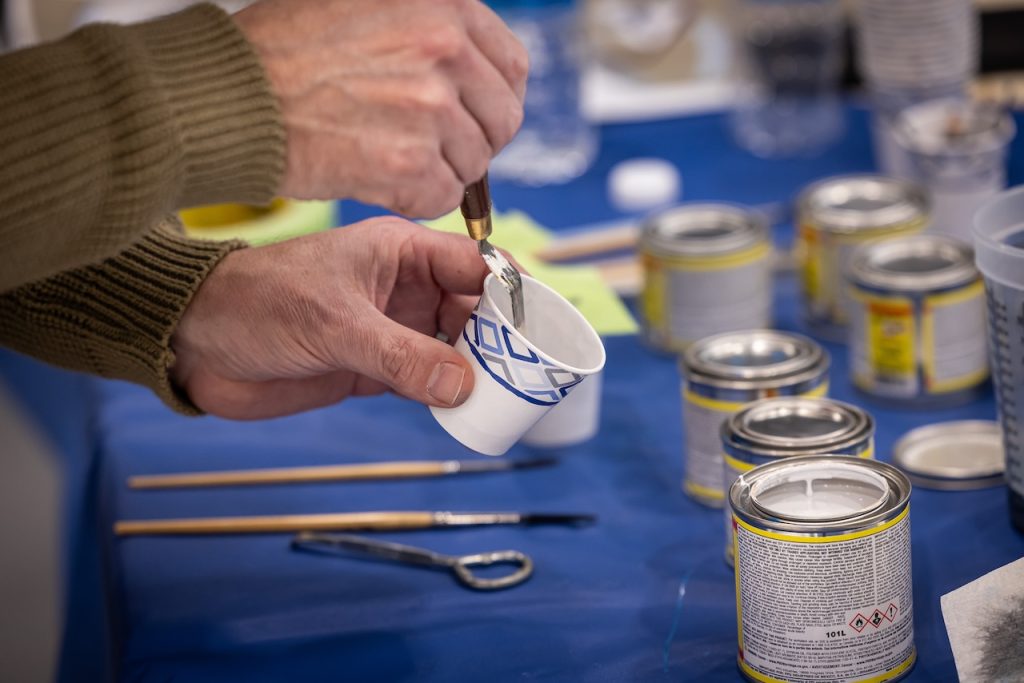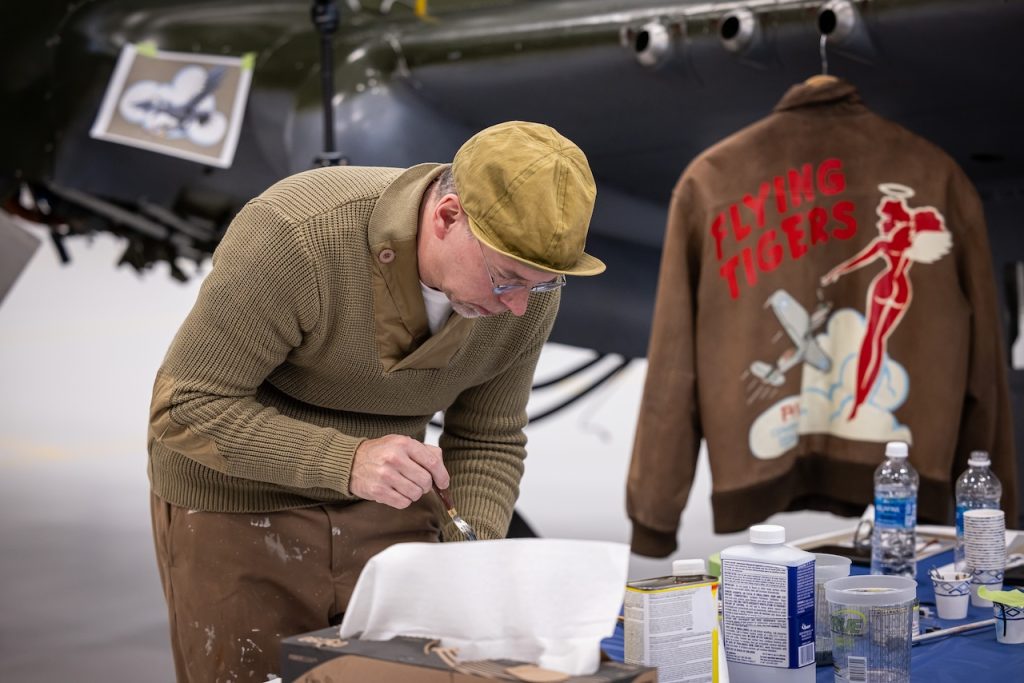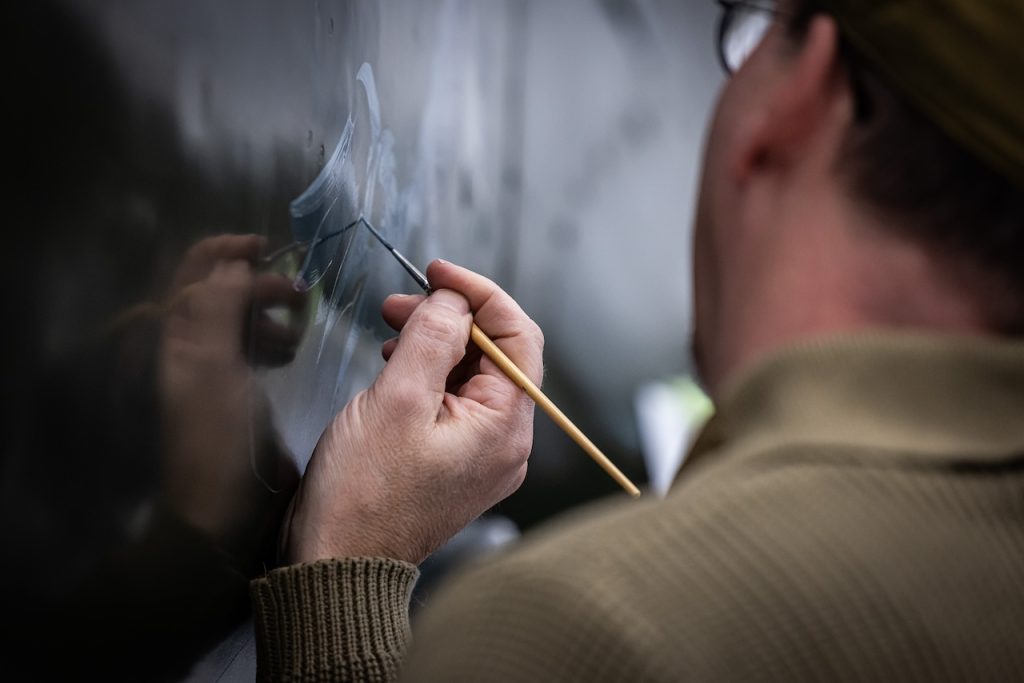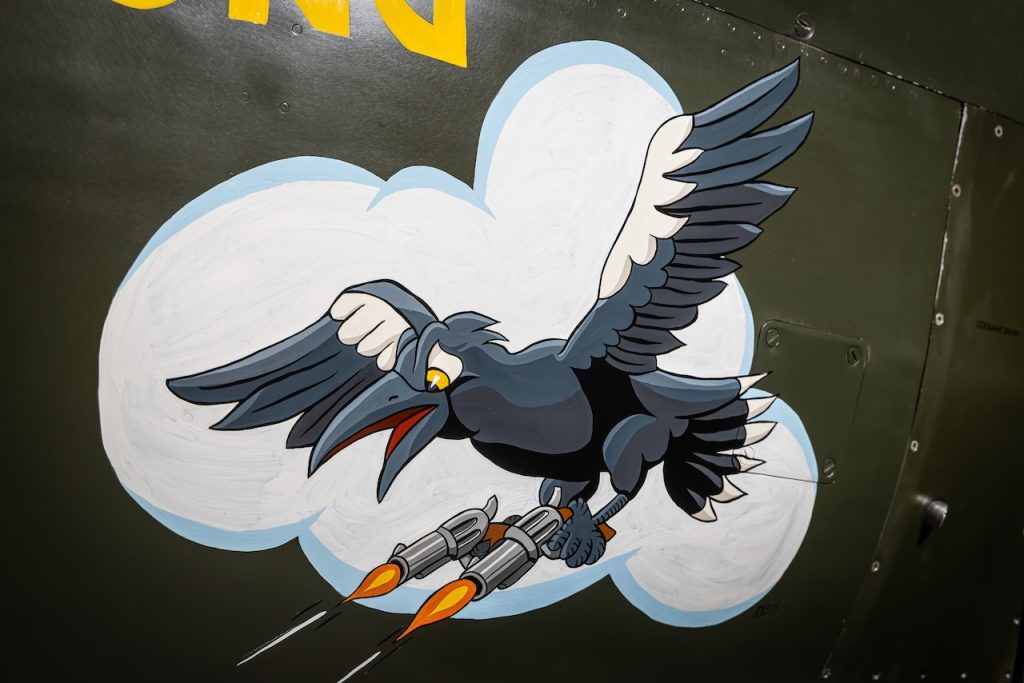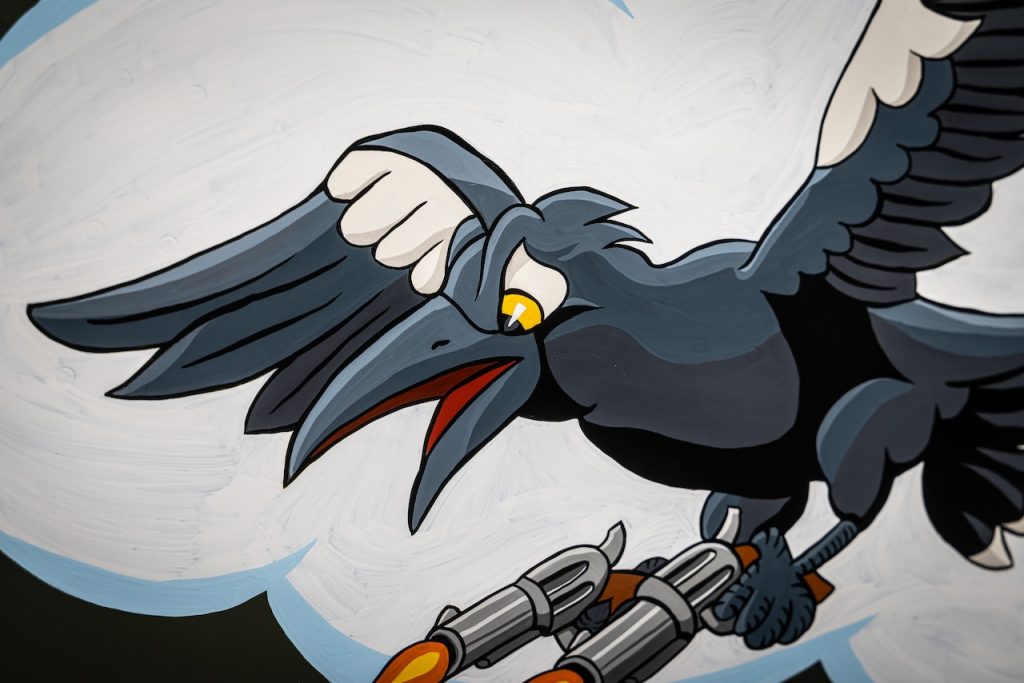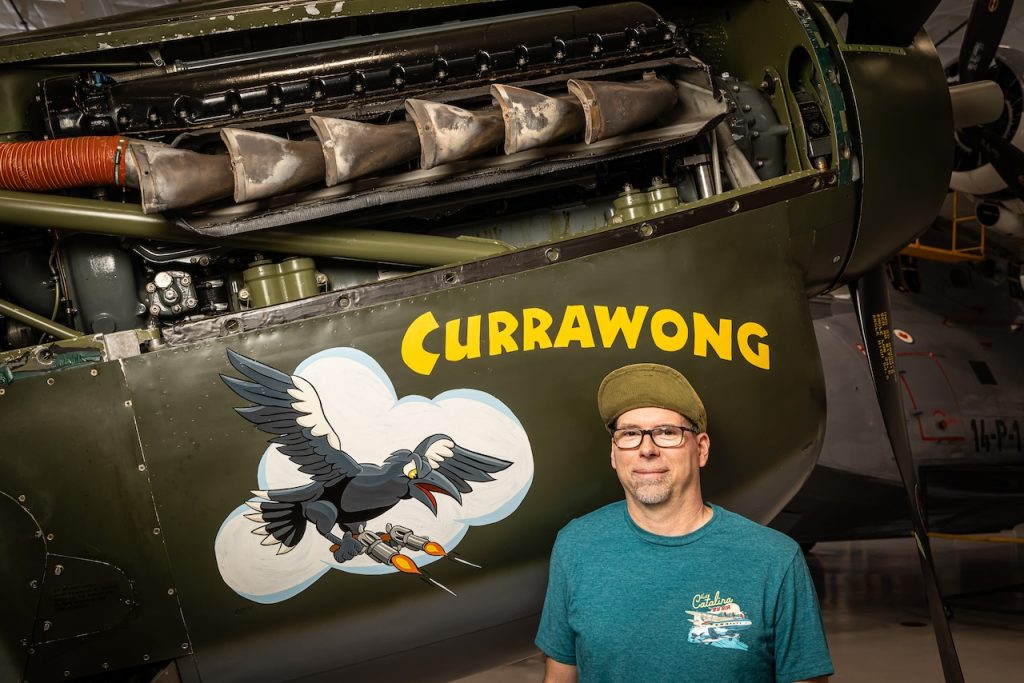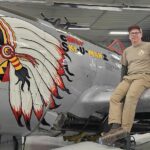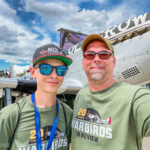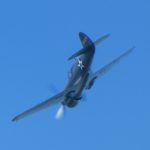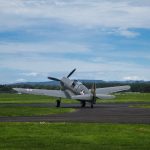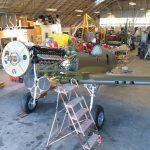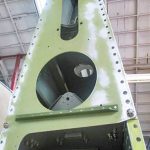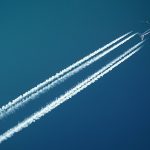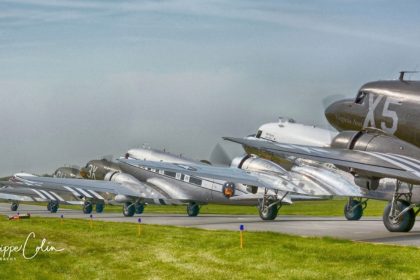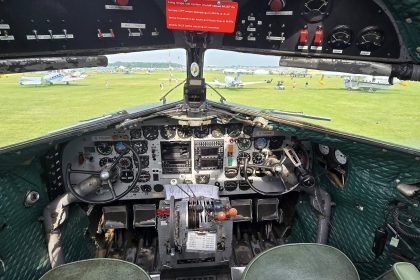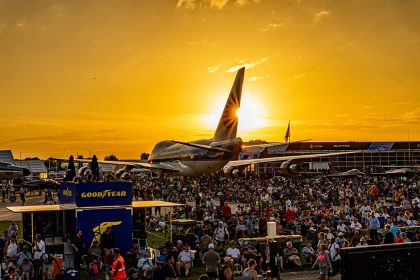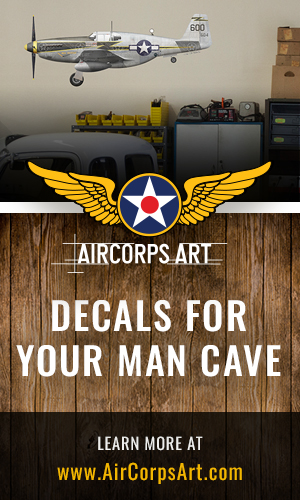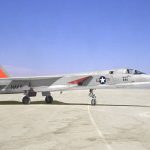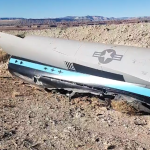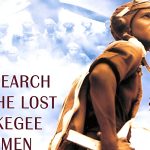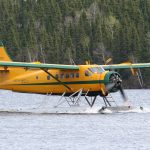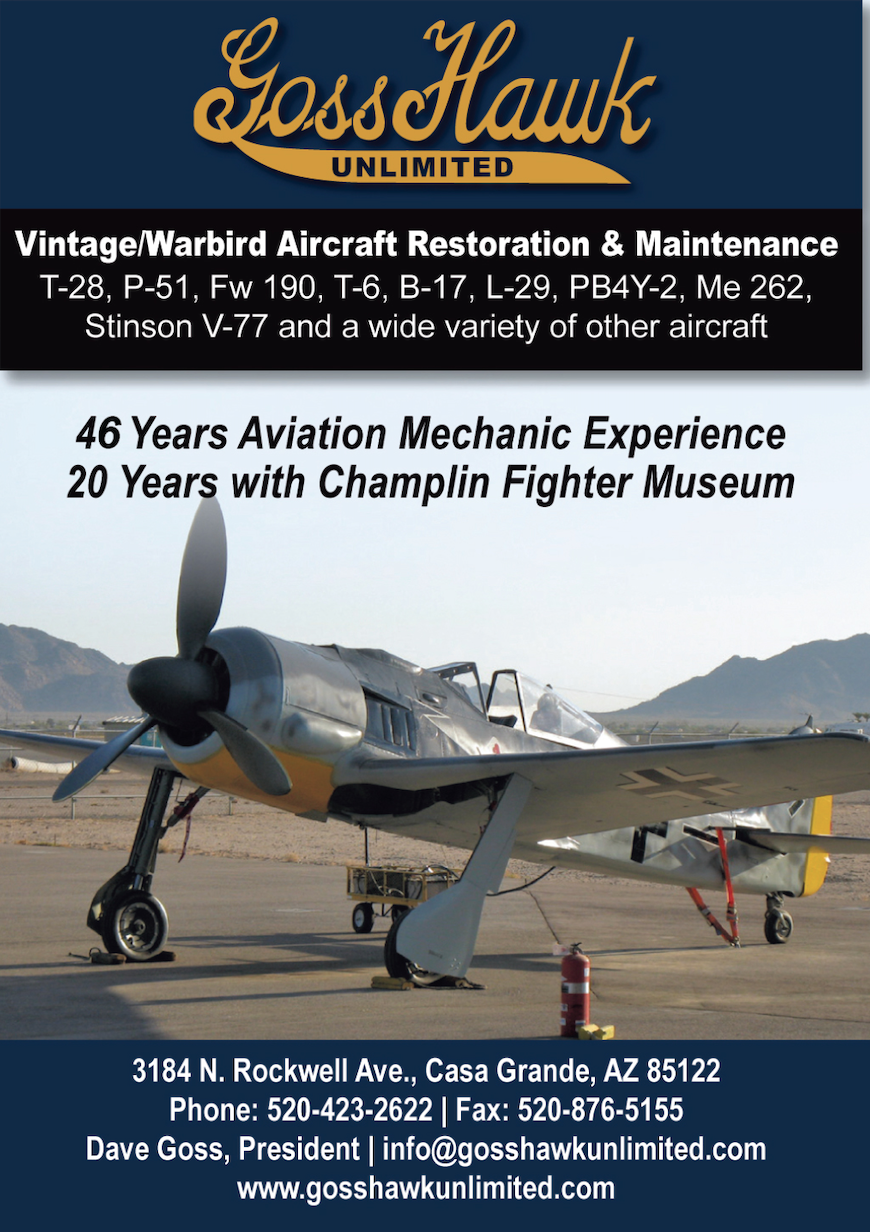Restoring historic warbirds is about more than just mechanical work—it’s about preserving the stories and spirit of the aircraft that once soared in combat. For the Soaring by the Sea Foundation, authenticity is key, especially concerning their Curtiss P-40 Warhawk. Without any surviving photos of its original nose art, the team undertook extensive research to create a design that honored both its combat history and the style of its wartime squadron. We spoke with Coy Pfaff, Executive Director of the Soaring by the Sea Foundation, who enlisted renowned aviation artist Chad Hill, owner of Django Studios, to bring the P-40 Warhawk’s nose art to life.
Uncovering the Past
Pacific Wrecks provides a detailed history of the aircraft. Built by Curtiss in Buffalo, New York, this P-40N-1 Warhawk (serial number 42-104730, Constructors Number 28492) was delivered to the U.S. Army Air Force (USAAF) before being disassembled, shipped to Australia, and reassembled. In August 1943, it was assigned to the Royal Australian Air Force (RAAF) as Kittyhawk A29-448—though also marked with serial number A29-1050 on the opposite tail. It joined No. 75 Squadron on September 17, 1943, coded GA-C, and was flown by multiple pilots, including Dick Sasse, Geoff Williams, Charles Bowly, John Bailey, and Ben Weston, seeing combat at Milne Bay. On March 13, 1944, while piloted by F/L Frank Arthur Coker, the aircraft suffered a landing mishap at Nadzab Airfield and was sent to 11 RSU for repairs. A month later, on April 8, it endured another landing accident at Cape Gloucester Airfield before being repaired and reassigned to No. 78 Squadron at Tadji Airfield on May 1. Just three days later, on May 4, while flown by F/O Geoffrey O’Halloran Giles, it experienced hydraulic and electrical failure, belly-landing at Tadji. Declared beyond repair, it was abandoned on October 25, 1944. The aircraft remained untouched at Tadji Airfield until 1974, when Charles Darby recovered it with funding from David Tallichet’s Yesterday’s Air Force. It was shipped via Lae to New Zealand and placed in storage in Auckland. In the mid-1990s, restoration began with Pacific Aircraft Ltd, completed by Pioneer Aero Restorations under the co-ownership of Charles Darby and Garth Hogan. Restored in RAAF No. 75 Squadron markings as P-40N Currawong GA-C, it returned to the skies in 2000, making its debut at the Warbirds over Wanaka air show.

Recreating the Nose Art
When the aircraft was recovered, all the cowlings from the firewall forward were missing, leaving no trace of its original nose art. However, research revealed that No. 75 Squadron often named its aircraft based on their letter designation, and in this case, “Currawong” was chosen—a nod to the black-and-white Australian magpie featured on the squadron’s patch. The name was retained during the aircraft’s 2000 restoration in New Zealand, as it was both fitting and historically plausible.
To enhance its authenticity, Chad Hill conducted extensive research on period-correct fonts, colors, and artistic styles. “I wanted it to fit within the squadron’s aesthetic while also appealing to people today,” he explained. Inspired by vintage Disney-style cartoons, the final design features a stylized magpie wielding two six-shooters—symbolizing the P-40’s reputation as a fierce fighter aircraft. The lettering, sourced from a 1941 typeface book, ensures historical accuracy.
From Concept to Canvas
Once the design was finalized, the painting process began. Careful placement was key, ensuring symmetry on both sides of the fuselage. Chad worked methodically, mixing colors in advance to maintain consistency and painting in stages to allow for touch-ups. “I started with the base colors of the bird, then moved on to the guns and flames,” Chad recalled. “By the first night, most of the major elements were in place. The second day was about refining details—painting the cloud background, adding depth, and completing the black outlines, which took about four hours alone.” On the final day, highlights were added, and any imperfections were carefully corrected. “I went over everything, fixing lines, adjusting colors, and making sure every detail was just right. Finally, I signed my name small at the bottom, and we took some photos.”
Preserving History for Future Generations
The Soaring by the Sea Foundation is dedicated to keeping warbirds flying, with a focus on aircraft that have documented combat histories. “We strive to restore aircraft as close to their original wartime appearance as possible,” said Coy Pfaff. “The addition of Currawong completes the aircraft’s identity and helps keep its history alive for future generations.” Beyond aircraft restoration, the foundation prioritizes veteran outreach and youth engagement, frequently hosting open houses and STEM events to inspire the next generation of aviators. Their collection includes other historic aircraft, such as a combat-proven PBY Catalina and a Skyraider that served in the Korean War. With Currawong now proudly displayed on their P-40, the Soaring by the Sea Foundation continues its mission of honoring aviation history—one careful brushstroke at a time. For more information, visit www.soaringbythesea.com







